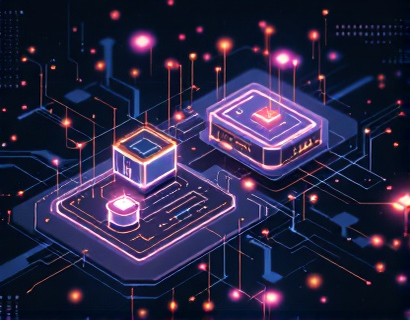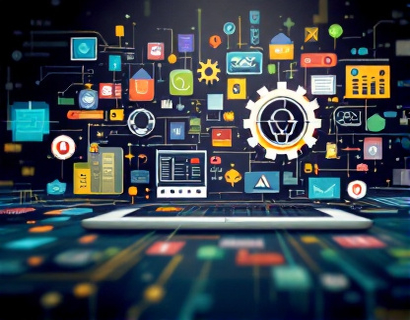Next-Gen Connectivity: Elevating Business and Personal Communication with Advanced Telecom and Internet Solutions
The rapid evolution of telecommunications and internet technologies has revolutionized the way businesses and individuals connect, communicate, and conduct operations in the digital age. The transition from traditional telephony and broadband to advanced connectivity solutions has opened new avenues for efficiency, productivity, and innovation. This article delves into the transformative impact of these advancements, highlighting how cutting-edge infrastructure and specialized software solutions are reshaping the landscape of connectivity and communication.
At the core of this transformation is the development of next-generation digital infrastructure. Modern telecom networks are built on a foundation of fiber optics, 5G technology, and cloud-based services, which together provide unprecedented speed, reliability, and capacity. Fiber optic cables, with their ability to transmit data over long distances at high speeds, form the backbone of this new infrastructure. They enable businesses to enjoy low-latency connections, crucial for applications like real-time video conferencing, cloud computing, and big data analytics.
5G technology represents a significant leap forward in mobile connectivity. With peak data rates reaching several gigabits per second and latency as low as 1 millisecond, 5G supports a massive number of connected devices. This capability is particularly beneficial for the Internet of Things (IoT), where numerous sensors and devices need to communicate seamlessly. For businesses, 5G opens opportunities for smart factories, autonomous vehicles, and enhanced remote work solutions. Individuals benefit from faster downloads, smoother streaming, and more responsive online experiences.
Cloud computing is another pillar of modern connectivity. By offloading data storage and processing to remote servers, businesses can scale their operations efficiently without the need for extensive on-premises hardware. Cloud services offer flexible pricing models, automatic updates, and robust security measures. For individuals, cloud storage solutions like Google Drive and Dropbox provide easy access to files from any device, fostering collaboration and mobility. The integration of artificial intelligence (AI) and machine learning (ML) in cloud services further enhances functionality, enabling predictive analytics and personalized user experiences.
The synergy between advanced telecom infrastructure and specialized software solutions is pivotal in elevating communication. On the telecom side, network management systems and software-defined networking (SDN) play a crucial role. SDN separates the control plane from the data plane, allowing for more agile and programmable network management. This flexibility is essential for dynamically allocating resources based on real-time demand, ensuring optimal performance and minimizing downtime. Network management systems monitor and optimize network traffic, detect potential issues, and automate troubleshooting, contributing to a more reliable and efficient connectivity experience.
On the software side, specialized solutions cater to the unique needs of businesses and individuals. For businesses, customer relationship management (CRM) systems, enterprise resource planning (ERP) software, and collaboration tools like Slack and Microsoft Teams are indispensable. These tools streamline workflows, enhance productivity, and facilitate seamless communication across teams and departments. For individuals, productivity apps, virtual private networks (VPNs), and cybersecurity solutions ensure that personal and professional communications remain secure and efficient.
The impact of these advancements on business operations cannot be overstated. Advanced connectivity enables remote work on a scale never before possible, breaking geographical barriers and fostering a global workforce. Video conferencing tools like Zoom and Microsoft Teams have become essential for virtual meetings, reducing the need for travel and lowering operational costs. Cloud-based ERP systems allow businesses to manage resources, track inventory, and analyze data in real-time, leading to better decision-making and increased competitiveness. Additionally, the integration of AI and ML in business processes automates routine tasks, freeing up employees to focus on strategic initiatives.
For individuals, the benefits are equally profound. High-speed internet access is no longer a luxury but a necessity, enabling remote learning, telemedicine, and digital entertainment. Online education platforms like Coursera and Khan Academy provide access to quality educational resources, democratizing learning opportunities. Telemedicine services allow patients to consult with healthcare professionals from the comfort of their homes, improving access to medical care, especially in remote areas. Streaming services and social media platforms keep individuals connected, entertained, and informed, enriching their daily lives.
The enhancement of digital infrastructure also plays a critical role in economic development. Regions with robust telecom networks attract investments, spur innovation, and create jobs. Governments and private sectors collaborate to deploy infrastructure in underserved areas, bridging the digital divide and promoting inclusive growth. For instance, rural broadband initiatives aim to bring high-speed internet to areas previously lacking reliable connectivity, opening doors to new economic opportunities and improving the quality of life.
Moreover, the focus on quality and customer satisfaction in the deployment of advanced telecom and internet solutions ensures that users enjoy a seamless and reliable experience. Telecom providers invest in network upgrades, expand coverage, and implement advanced monitoring systems to maintain high service levels. Customer support services are enhanced with AI-driven chatbots and human agents trained to resolve issues swiftly and effectively. This commitment to excellence builds trust and loyalty among users, driving long-term success for service providers.
The future of connectivity holds even more promise with the emergence of emerging technologies. The development of 6G networks is on the horizon, promising even higher speeds, lower latency, and greater connectivity density. Quantum communication offers the potential for ultra-secure data transmission, leveraging the principles of quantum mechanics to protect information from eavesdropping. These advancements will further elevate the standards of business and personal communication, opening new frontiers in technology and innovation.
In conclusion, the evolution of telecommunications and internet services through advanced infrastructure and specialized software solutions is transforming the way we connect and communicate. The benefits extend across various sectors, from enhancing business operations and fostering economic growth to improving personal lives and educational opportunities. As technology continues to advance, the focus on quality, reliability, and customer satisfaction will remain paramount, ensuring that the digital landscape remains a powerful tool for success and empowerment.










































